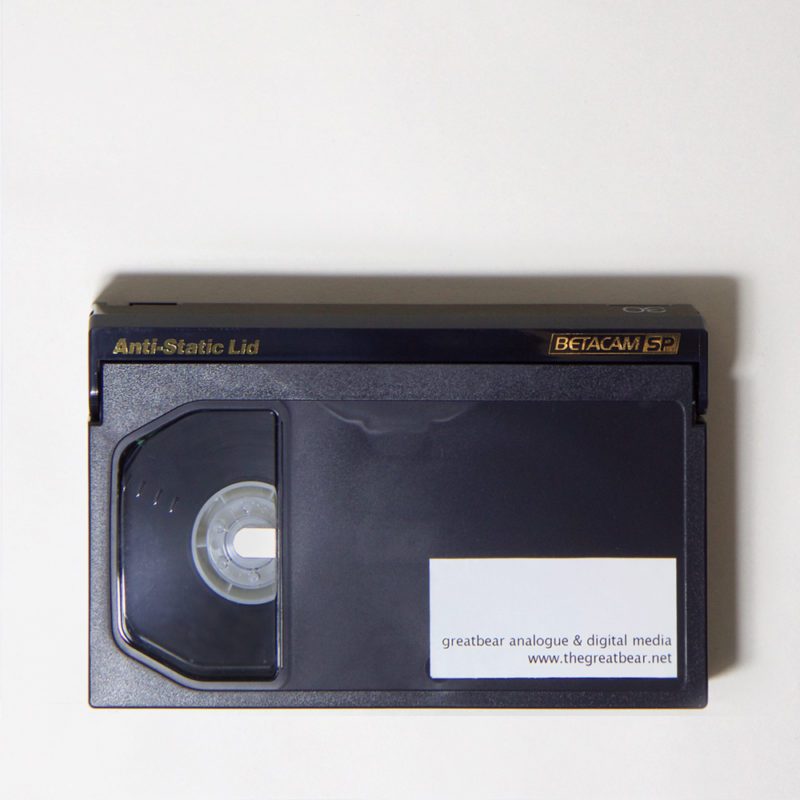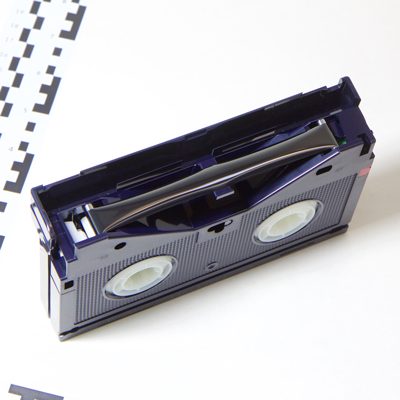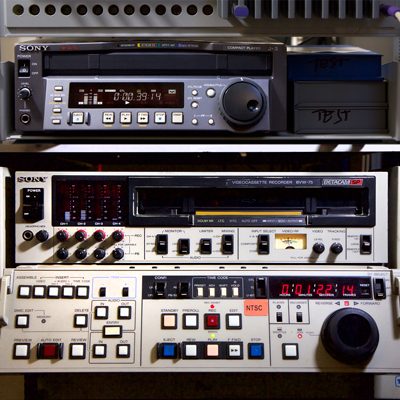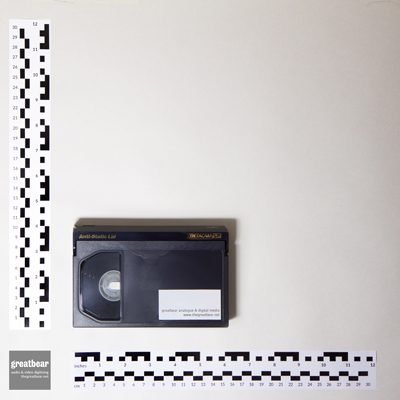introduction to Betacam cassette transfer
Betacam (launched 1982) and Betacam SP 'Superior Performance' (1986) are the analogue versions of the Betacam component video format, on half inch cassette-based tape. The original Betacam tapes are often referred to as Betacam Oxide, due to their ferric oxide tape formulation. As with their digital successors (Digital Betacam / Betacam SX / MPEG IMX), Betacam Oxide and Betacam SP (aka Beta SP) were particularly popular in broadcast contexts.
At Greatbear, we've the wide range of equipment and experience needed to make the best quality transfers from all variations of Betacam video tape.
We offer a range of delivery formats for our video transfers. Following International Association of Sound and Audiovisual Archives TC-06 guidelines, we deliver FFV1 lossless files or 10-bit uncompressed video files in .mkv or .mov containers for archives. We can also produce Apple ProRes mezzanine files for ease of editing. We provide smaller viewing files as H.264 encoded .mp4 files or on DVD. We're happy to create any other digital video files, according to your needs.
We can provide the appropriately-sized USB delivery media for your files, or use media supplied by you, or deliver your files online. Files delivered on hard drive can be for any operating system MacOS, Windows or GNU/Linux and filesystems (HFS+, NTFS or EXT3).
Betacam and Betacam SP video cassette recordings can vary both in duration and in the extent of physical tape degradation, so we always assess tapes before confirming the price of a transfer.
We offer free assessments - please contact us to discuss your project.
For an introduction to our assessment and treatment processes, please see our guide to "what happens to your video tape".
Betacam machines
- Sony BVW 75D (NTSC SDI)
- Sony BVW 75 (NTSC)
- Sony BVW 65 (PAL)
- Sony UVW 1800 (PAL) x 3
- Sony UVW 1200 (PAL)
Betacam format variation
| Betacam tape type | video standard | BVW75 analogue replay & digitising | DVW D-Beta replay & SDI transfer | 4 audio channels captured | preservation of LTC & VITC timecode supported |
|---|---|---|---|---|---|
| Betacam Oxide | PAL | ✓ | ✓ | n/a | ✓ |
| Betacam SP | PAL | ✓ | ✓ | ✓ | ✓ |
| Betacam Oxide | NTSC | ✓ | ✓ | n/a | ✓ |
| Betacam SP | NTSC | ✓ | ✓ | ✓ | ✓ |
Scroll to the right to view full table on smaller screens.
Betacam tape risks & vulnerabilities
Betacam and Betacam SP used different tape formulations and not all machines are able to replay the earlier ferric oxide based recordings. Many of these earlier 'Oxide' tapes and some Betacam SP suffer from binder hydrolysis or 'sticky shed syndrome' and need treatment before they can be safely replayed and digitised.
The half inch wide tape used for these formats is thinner than earlier analogue formats at 14µm or 20µm thick. Any mould growth on the edge of the tape pack can be catastrophic, sticking the top or bottom edge of the tape layers together and ripping the tape when wound or played.
Betacam was a very successful and popular broadcast format and machine obsolescence isn't a huge issue at the moment. Generally these machines are reliable and long-lasting but this won't always be the situation, and key spares must be sourced and preserved for the future.
Betacam tape brands / models
- Ampex
- 398
- BC30M
- Fuji
- M321SP 5M; M321SP 10M; M321SP 20M; M321SP 30M; M321SP 60ML; M321SP 90ML
- Maxell
- B-5M BQ; B-10M BQ; B-30M BQ; B-60ML BQ
- Sony
- BCT-5CLN; BCT-20K; BCT-30G; BCT-90MLA; BCT-60MLA; BCT-30MLA; BCT-30MA; BCT-20MA; BCT-10MA; BCT-5MA.
Betacam video history
First developed by Sony in 1982, the Betacam component video format was aimed at the professional and broadcast market.
By recording luminance (Y) to one track and colour (R-Y/B-Y) to a separate track, Betacam was able to achieve 300 lines of horizontal luminance resolution and 120 lines chrominance resolution, on a relatively cheap cassette-based format (cf. 30 lines chrominance resolution for VHS, Betamax, U-matic and Video8 formats).
Betacam SP, which was introduced in 1986, replaced ferric oxide tape with denser, metal-formulated tape, allowing an increase in horizontal luminance resolution to 340 lines, and the development of larger cassettes, extending recording time to 90 minutes. Betacam SP also added FM audio recording to support four audio channels available for recording and playback.
Betacam SP became an industry standard in television acquisition and post-production in the 1990s.
Video cassettes and tape boxes for Betacam and Betacam SP can be identified by these logos. Both are trademarks of the Sony Corporation.






